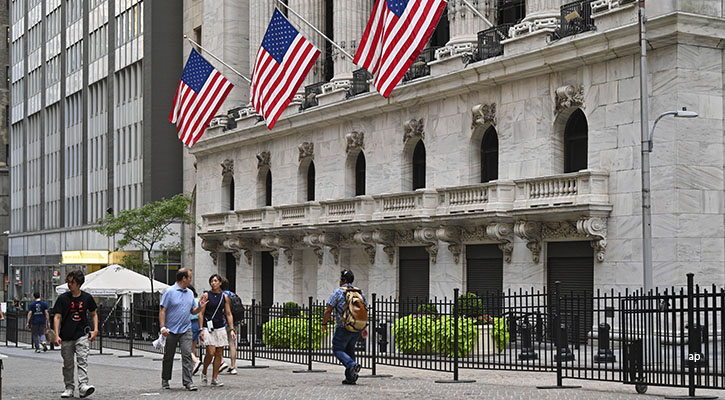
Best MPF Scheme -- Fidelity Retirement Master Trust
M: Morningstar K: KP Luk, Head of Hong Kong DC Business at Fidelity International.
M: Could you highlight any major changes made to the scheme over the course of 2016? In particular, please outline the investment options that were added to the scheme and/or any changes that helped facilitate a better client experience for scheme members.
K: Enhancing digital customer experience was one of our priorities in 2016. Our Hong Kong website was revamped with a responsive interface which provides our clients a seamless experience when browsing content with various devices like smartphones, tablets and desktop computers. To help members manage their MPF account more easily, we introduced “e-Message service” which notifies scheme members by SMS or email upon receipt of asset switching instruction, completion of MPF contributions, etc. Starting from December 2016, MPF forms with high customer demand have been converted into “Smart Forms” and were launched on the Fidelity website. The purpose of this initiative is on one hand uplift customer experience, allowing customers to submit their instructions/updates to us in an effective way, which promotes engagement, and on the other hand increase efficiency. The smart forms are incorporated with a responsive design, with validation logics to ensure customer submits the correct information to us. This will mitigate follow-up efforts from our Client Services Team on error cases and free up resources for more value-added services for members. Finally, new end-to-end processes have also been established for our Client Services Team to better manage our customers’ request and ensure a smoother customer experience.
Offering our scheme members a comprehensive range of fund choices is also important to us. In 2016, the Fidelity Retirement Master Trust (FRMT) had launched one new fund, bringing the number of constituent funds to a total of 19. The FRMT - RMB Bond Fund is a new addition to our existing range of bond funds. The RMB Bond Fund is designed for moderately conservative investors with a low risk appetite, or investors seeking a steady return over the medium to long term horizon.
M: What are some of your more popular MPFs? Why do you think that is?
K: The Fidelity Retirement Master Trust offers a full array of investment choices for our MPF members and as such it really depends on individual retirement objectives and appetite towards taking risk. Having said that, mixed asset funds tend to be a popular choice amongst our members, as it is a relatively simple to understand investment concept. The multi-asset approach offers globally diversified (with a Hong Kong bias) strategies which have also proved to be effective at delivering long term performance that reflect their respective risk and return profiles. Our Hong Kong Equity Fund is also a popular fund choice amongst our members as there is a natural home-bias towards investing into a market which they are familiar with.
M: Can you comment on how the scheme’s underlying investment options are put together? How do you determine the appropriate product types (e.g. equities, fixed income, target-date) for the scheme and subsequently, the most suitable investment strategy/mandate for each type of product(s)?
K: At Fidelity International, we are constantly reviewing our MPF scheme to ensuring an appropriate product mix is in place to suit our members’ attitude towards risk and return objective. In light of this, the process for implementing the addition and/or removal of fund choices involve various parties and functional groups within Fidelity International and can be broadly broken down into three main stages: Market assessment, Governance and Execution. The main objective for adopting this process is to ensure we are not arbitrarily adding (or deleting) funds and that every fund under consideration is done within a well thought out framework and well endorsed by various levels of management. More importantly for the MPF market, there is an emphasis on the ability of the fund to delivering consistent long-term returns as this is aligned with the typical time horizon nature of pension investing.
M: How do your fees compare with your peers? Are there any initiatives to reduce fees?
K: The Fidelity Retirement Master Trust is a good-value offering with the average scheme fund expense ratio (FER) being lower versus the industry average. We regularly review our existing fees with an aim to providing our members with a MPF scheme that offers attractive pricing as well as delivering strong performance and member services. In 2016, we reduced the management fee of the MPF Conservative Fund from 1.08% p.a. to 0.93% p.a. as well as the Hong Kong Bond Fund from 1.45% p.a. to 1.20% p.a.
M: With the Default Investment Strategy (DIS) launching on 1 April 2017, can you briefly describe the DIS in your scheme? What advice do you have for scheme members considering investing in the DIS?
K:The Default Investment Strategy (DIS) is designed to offer members an investment solution that caters to the following: low-cost fee structure, gradual de-risking as member move closer to retirement age as well as being globally diversified. On the 1 April, the Fidelity Retirement Master Trust (FRMT) will be launching two new constituent funds, namely the Core Accumulation Fund (CAF) and the Age 65 Plus Fund (A65F). Both the CAF and A65F will invest in either APIFs or ITCIS, in accordance to a reference portfolio. The DIS will be invested in either one or both the CAF and A65F, depending on the member’s age profile.
On the other hand, the Fidelity Retirement Master Trust currently has a range of actively managed target date funds, namely the Fidelity SaveEasy range. The strategic asset allocation (SAA) for each target date fund evolves over its lifespan, in response to a pre-determined asset allocation model designed to dynamically de-risk the portfolio up to the target date. Our proprietary roll down model utilizes the sophisticated computational and scientific expertise of Fidelity’s Investment Solutions Design team. Further value is added through active management of the underlying building blocks and respective securities.
Members are also able to select the individual funds (namely, the CAF and A65F) as part of their MPF portfolio. Should a member chooses to invest this way, they may find it helpful to compare it with the four mixed asset funds which the FRMT offers. While the CAF and A65F are passively managed, investing into index tracking collective investment schemes (ITCIS) the mixed asset funds offered under FRMT are actively managed. Members need to be aware that the strategic asset allocations (SAA) for both the CAF/A65F and mixed asset funds remain relatively stable over time, while members’ individual circumstances and risk/return profile may change as they move closer towards retirement. Therefore, they have to be reminded that while a particular mixed asset fund (or CAF/A65F) may match the member’s current risk profile, they have to revisit their investment choice regularly to decide if it remains so as their personal circumstances change.
View all Morningstar Hong Kong Fund Awards 2017 articles here

















